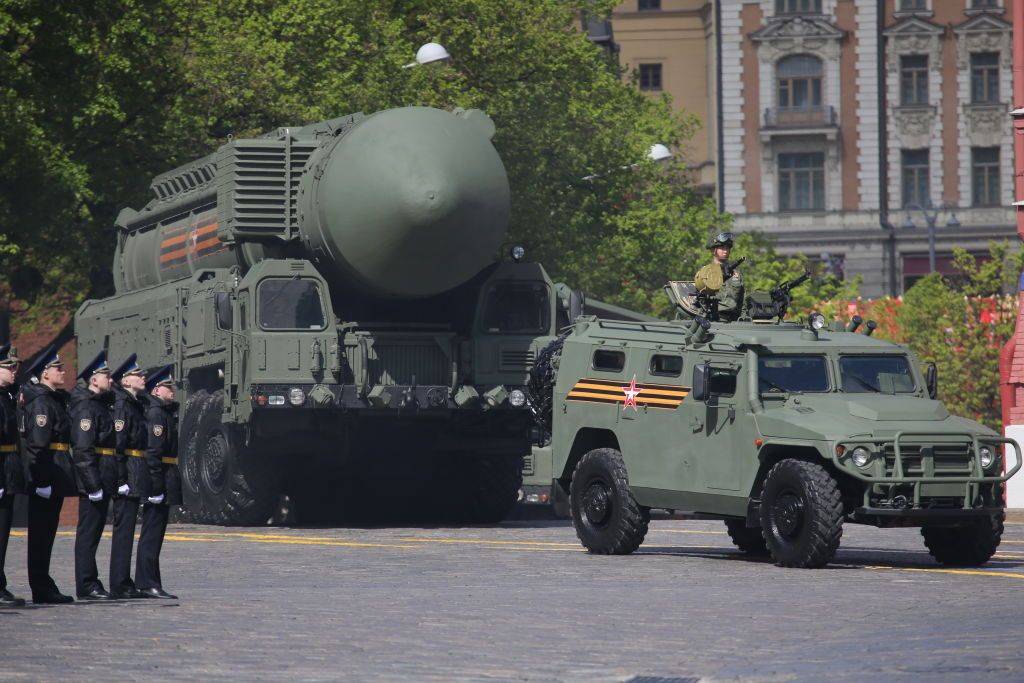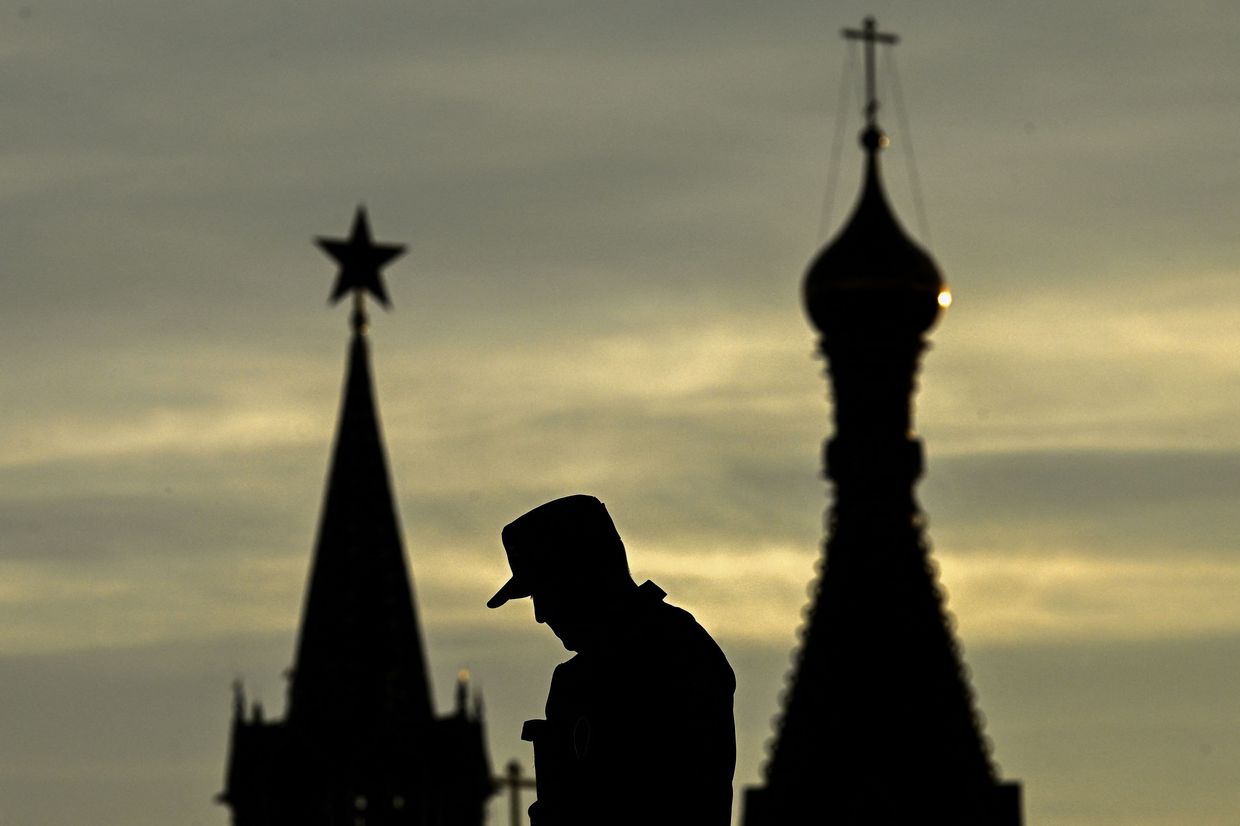Editor’s Note: This article was published by the twice-weekly newsletter “The Counteroffensive with Tim Mak” on Nov. 23, 2024, and has been re-published by the Kyiv Independent with permission. To subscribe to The Counteroffensive, click here.

For a brief period just over 30 years ago, Ukraine possessed the third-largest nuclear arsenal in the world. Its missiles could reach targets more than 10,000 kilometers away in just 25 minutes. But in 1994, after the breakup of the Soviet Union, the newly independent country gave up all its nuclear weapons. In return, it signed the Budapest Memorandum alongside the United States, Britain, and Russia, which obligated them to provide security assurances.
All illusions were shattered when one of the guarantor countries waged war against Ukraine, first in 2014 and then in a full-scale invasion in 2022.
The nuclear threat in Ukraine has been rising. On Nov. 20, Russian President Vladimir Putin lowered the country's legal threshold for a nuclear strike, allowing the possibility of a nuclear response to a conventional attack. Putin made the change after U.S. President Biden authorized Ukraine to use American-made missiles to strike inside Russia.
The fundamental issue behind a potential Ukrainian nuclear program is the sense of betrayal: by Russia, for invading, and by the West, for failing to uphold its security assurances.
Ukrainian officials continue to assert that the country has no plans to develop nuclear weapons and prefers a peaceful path. However, a recent poll showed that a majority of Ukrainians support the idea of returning to nuclear status. They see it as a means to deter Russia. If Ukraine is excluded from NATO and U.S. military aid, they believe restoring nuclear capabilities could bolster sovereignty independently.

Last week, The Times of London speculated that Ukraine could build a basic nuclear bomb within a few months if the Trump administration stopped providing military aid. The spent nuclear fuel stored at Ukrainian power plants could be used to create a weapon similar to the "Fat Man" bomb dropped on Nagasaki during WWII.
"Statements about Ukraine's nuclear capabilities are made either by total ignoramuses or by Russian provocateurs... As a person who worked on this issue continuously in parliament, I can assure you 100% that the Ukrainian government has never raised the issue of using nuclear weapons at any level," former Ukrainian Minister Yurii Kostenko told The Counteroffensive.
Kostenko, the former environment and nuclear safety minister, also led Ukraine's delegation for nuclear disarmament in the 1990s. After announcing its commitment to nuclear disarmament, Ukraine saw new prospects for its future. In 1992, the U.S. was even prepared to offer NATO membership as a security guarantee.
But Moscow had other plans. Under immense Russian pressure, Ukraine didn’t destroy its nuclear weapons independently. Instead, it handed them over to the Kremlin for destruction.
"From the very first minutes of the negotiation process on Ukraine's nuclear disarmament, one thing became clear: in the minds of the Russians, the Soviet Union had not collapsed — it had merely transformed. Russia, or rather the Kremlin, still saw itself as having the right to control the actions of its former republics, as it had before," Kostenko recalled.
The ex-minister explained that due to the Soviet-era mindset of the Ukrainian government at the time — considering Russia as a “big brother” — Kyiv ultimately surrendered over 170 intercontinental missiles, more than 40 strategic bombers, and thousands of nuclear warheads to Russia. It was a fatal mistake.
In the 1990s, it was estimated that Ukraine could have restored its nuclear potential in five to seven years. According to Harvard nuclear disarmament expert Mariana Budjeryn, it would take a similar timeframe for Ukraine to rebuild such capabilities now, assuming the war ended and sufficient financial resources were available.
However, this is purely theoretical — the situation is far more complicated.
To develop a nuclear weapon requires two key ingredients: significant financial resources and advanced technology. Today, Ukraine's economy is largely sustained by foreign aid, and it’s clear that Kyiv won’t be able to use Western funding to develop nuclear weapons. Finding the necessary funds within its own reserves is also highly unlikely, as other countries typically spend at least a billion dollars annually to maintain their nuclear capabilities.
"If you look at the financial capabilities of the Ukrainian state budget, it couldn't even finance the maintenance of the Ukrainian armed forces… even non-nuclear ones," Kostenko said.

Even if Ukraine could secure the funds to produce nuclear weapons, there remains the technical and engineering challenge.
Ukraine has been involved in the production of nuclear weapons in the past. For example, manufacturers based in Ukraine produced one of the first Soviet intercontinental missiles. According to Budjeryn, Kyiv still retains some institutional knowledge of nuclear physics and certain industrial capacities inherited from the Soviet era. But much of this expertise and infrastructure has been lost over time.
Ukraine is one of the most nuclear-dependent countries in the world, with nuclear energy accounting for more than half of its electricity production. Currently, there are four nuclear power plants in operation in Ukraine, and another, Chornobyl, has been decommissioned since 1986.
Uranium and plutonium can be used to make nuclear fuel. Plutonium almost doesn’t exist in nature, and its production requires a special kind of reactor that’s not easy to build or conceal.
Uranium, on the other hand, is a natural resource, and Ukraine has large reserves of this ore. It was from this material that the first Soviet warheads were produced. However, Ukraine is not a country capable of producing enriched nuclear fuel, even for peaceful purposes. Before the full-scale invasion, Ukraine bought nuclear fuel from Russia but has since switched to purchasing it entirely from the United States. And this is far from the highly enriched uranium needed for weapons development.

Ukraine is a part of the International Atomic Energy Agency (IAEA). If it begins producing nuclear fuel for weapons, the IAEA will likely discover it. Ukraine would then need to withdraw from the Nuclear Non-Proliferation Treaty.
The only country to have done so is North Korea. Since then, it has been one of the most sanctioned countries in the world, which has severely impacted its economy. If Ukraine withdrew from the treaty, it could face a similar fate, the former nuclear safety minister believes.
"North Korea has been under sanctions for 12 years, Iran is under sanctions, and Ukraine will be under sanctions. The question is who will bring us shells, missiles, especially for air defense, because every day Russia shells peaceful cities," Kostenko said.
To develop nuclear weapons, Ukraine would need specialized infrastructure it currently lacks. Uranium enrichment requires centrifuges — machines that spin at incredibly high speeds to separate isotopes. This is a highly complex and costly process, involving thousands of centrifuges, the distribution of which is strictly regulated worldwide.
Uranium can be enriched secretly by moving the production process underground, as Iran has been attempting to do for years. But even if Ukraine were to move all its production underground, it’s unlikely the development of nuclear weapons could stay secret for long. Both Russian and Western intelligence services are more active than ever in the country. While Russian intelligence seeks to exploit vulnerabilities in Ukraine’s defenses, Western agencies are closely monitoring the course of the war.
"The Ukrainian military has still managed to keep operations secret in several instances. The surprise in the Kharkiv region during the counteroffensive and in the Kursk region are examples. It is possible to maintain such secrecy for short periods," said Budjeryn.
Even if Ukraine managed to keep its nuclear production secret, nuclear warheads alone are insufficient. Ukraine would need delivery systems to fire the weapons. Typically, nuclear forces consist of three components — ballistic missiles, nuclear submarines, and strategic bombers — collectively known as the “nuclear triad.” At present, Ukraine has no submarines in service, and its bombers have been transferred to Russia. This leaves the only viable option: to develop long-range missiles.
"A prototype of a short-range ballistic missile has already been developed, but we have yet to see whether there is any mass production of these systems, or how these systems might be used, for example, in a deterrence strategy with conventional or nuclear warheads," explained Budjeryn.
Even if Ukraine developed these systems, it’s unclear that nuclear weapons would guarantee peace. The presence of nuclear weapons hasn’t always prevented conflict. For instance, India and Pakistan are both nuclear powers, yet their conflict has persisted for decades, with nuclear warheads failing to act as a deterrent. Kostenko is convinced that developing nuclear weapons, even if feasible, is a futile idea that would lead nowhere, as Ukraine lacks the capacity to compete with Russia's nuclear arsenal, the largest in the world.
"Why do we need nuclear weapons? Even if we were to reach a certain level of production, we would never be able to compete with Russia in terms of nuclear power to protect ourselves from a Russian savage wielding a nuclear club," the former minister remarked.
Ultimately, the idea of a domestic nuclear program is less about policy than a signal to the world. Talk about this issue reflects Ukraine’s grief and anger over once having the means to deter war on its land — and, after giving it up, being left vulnerable to death and destruction due to promises unkept.
Editor’s Note: The opinions expressed in the op-ed section are those of the authors and do not necessarily reflect the views of the Kyiv Independent.
Introducing official
merch from the Kyiv Independent













